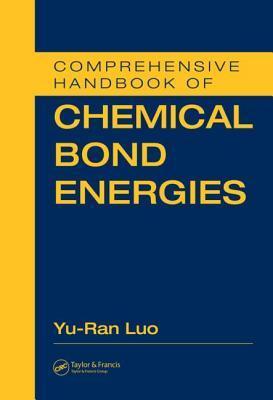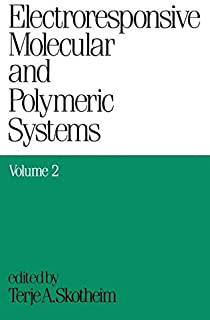Semiconductor Electrochemistry
Original price was: ₹17,254.20.₹13,803.36Current price is: ₹13,803.36.
ISBN: 9783527312818
Author/Editor: Memming
Publisher: John Wiley
Year: 2016
1 in stock (can be backordered)
Description
Providing both an introduction and an up-to-date survey of the entire field, this text captivates the reader with its clear style and inspiring, yet solid presentation. The significantly expanded second edition of this milestone work is supplemented by a completely new chapter on the hot topic of nanoparticles and includes the latest insights into the deposition of dye layers on semiconductor electrodes. In his monograph, the acknowledged expert Professor Memming primarily addresses physical and electrochemists, but materials scientists, physicists, and engineers dealing with semiconductor technology and its applications will also benefit greatly from the contents.
Additional information
| Weight | 1.028 kg |
|---|
Product Properties
| Year of Publication | 2016 |
|---|---|
| Table of Contents | Preface to the Second Edition XI Preface XIII 1 Principles of Semiconductor Physics 1 1.1 Crystal Structure 1 1.2 Energy Levels in Solids 3 1.3 Optical Properties 8 1.4 Density of States and Carrier Concentrations 11 1.4.1 Intrinsic Semiconductors 14 1.4.2 Doped Semiconductors 15 1.5 Carrier Transport Phenomena 17 1.6 Excitation and Recombination of Charge Carriers 19 1.7 Fermi Levels under Nonequilibrium Conditions 21 2 Semiconductor Surfaces and Solid Solid Junctions 23 2.1 Metal and Semiconductor Surfaces in a Vacuum 23 2.2 Metal Semiconductor Contacts (Schottky Junctions) 26 2.2.1 Barrier Heights 26 2.2.2 Majority Carrier Transfer Processes 31 2.2.3 Minority Carrier Transfer Processes 35 2.3 p n Junctions 38 2.4 Ohmic Contacts 41 2.5 Photovoltages and Photocurrents 42 2.6 Surface Recombination 46 3 Electrochemical Systems 49 3.1 Electrolytes 49 3.1.1 Ion Transport in Solutions 49 3.1.2 Interaction between Ions and Solvent 52 3.2 Potentials and Thermodynamics of Electrochemical Cells 53 3.2.1 Chemical and Electrochemical Potentials 53 3.2.2 Cell Voltages 56 3.2.3 Reference Potentials 59 3.2.4 Standard Potential and Fermi Level of Redox Systems 60 4 Experimental Techniques 65 4.1 Electrode Preparation 65 4.2 Current Voltage Measurements 65 4.2.1 Voltametry 65 4.2.2 PhotocurrentMeasurements 67 4.2.3 Rotating Ring Disk Electrodes 68 4.2.4 Scanning ElectrochemicalMicroscopy (SECM) 69 4.3 Measurements of Surface Recombination and Minority Carrier Injection 70 4.4 Impedance Measurements 72 4.4.1 Basic Rules and Techniques 72 4.4.2 Evaluation of Impedance Spectra 74 4.4.3 Intensity Modulated Photocurrent Spectroscopy (IMPS) 78 4.5 Surface Conductivity Measurement 80 4.6 Flash Photolysis Investigations 82 4.7 Surface Science Techniques 82 4.7.1 Spectroscopic Methods 83 4.7.2 In situ SurfaceMicroscopy (STMand AFM) 85 5 Solid Liquid Interface 89 5.1 Structure of the Interface and Adsorption 89 5.2 Charge and Potential Distribution at the Interface 91 5.2.1 The Helmholtz Double Layer 92 5.2.2 Gouy Layer in the Electrolyte 93 5.2.3 Space Charge Layer in the Semiconductor 94 5.2.4 Charge Distribution in Surface States 101 5.3 Analysis of the Potential Distribution 102 5.3.1 Germanium Electrodes 102 5.3.2 Silicon Electrodes 109 5.3.3 Compound Semiconductor Electrodes 111 5.3.4 Flatband Potential and Position of Energy Bands at the Interface 114 5.3.5 Unpinning of Energy Bands during Illumination 118 5.4 Modification of Semiconductor Surfaces 123 6 Electron Transfer Theories 127 6.1 The Theory of Marcus 127 6.1.1 Electron Transfer in Homogeneous Solutions 127 6.1.2 The Reorganization Energy 132 6.1.3 Adiabatic and Nonadiabatic Reactions 134 6.1.4 Electron Transfer Processes at Electrodes 134 6.2 The Gerischer Model 138 6.2.1 Energy States in Solution 138 6.2.2 Electron Transfer 143 6.3 Quantum Mechanical Treatments of Electron Transfer Processes 145 6.3.1 Introductory Comments 146 6.3.2 Nonadiabatic Reactions 149 6.3.3 Adiabatic Reactions 156 6.4 The Problemof Deriving Rate Constants 165 6.5 Comparison of Theories 167 7 Charge Transfer Processes at the Semiconductor Liquid Interface 169 7.1 Charge Transfer Processes at Metal Electrodes 169 7.1.1 Kinetics of Electron Transfer at the Metal Liquid Interface 169 7.1.2 Diffusion-controlled Processes 178 7.1.3 Investigations of Redox Reactions by Linear Sweep Voltametry 182 7.1.4 Criteria for Reversible and Irreversible Reactions 183 7.2 Qualitative Description of Current Potential Curves at Semiconductor Electrodes 185 7.3 One-step Redox Reactions 186 7.3.1 The Energetics of Charge Transfer Processes 186 7.3.2 Quantitative Derivation of Current Potential Curves 189 7.3.3 Light-Induced Processes 194 7.3.4 Majority Carrier Reactions 198 7.3.5 Minority Carrier Reactions 211 7.3.6 Electron Transfer in the Inverted Region 222 7.4 The Quasi-Fermi-Level Concept 225 7.4.1 Basic Model 225 7.4.2 Application of the Concept to Photocurrents 229 7.4.3 Consequences for the Relation between Impedance and IMPS Spectra 233 7.4.4 Quasi-Fermi-Level Positions under High-Level Injections 237 7.5 Determination of the Reorganization Energy 240 7.6 Two-step Redox Processes 244 7.7 Photoluminescence and Electroluminescence 249 7.7.1 Kinetic Studies by Photoluminescence Measurement 250 7.7.2 Electroluminescence Induced by Minority Carrier Injection 255 7.8 Hot Carrier Processes 258 7.9 Catalysis of Electrode Reactions 262 8 Electrochemical Decomposition of Semiconductors 267 8.1 Anodic Dissolution Reactions 267 8.1.1 Germanium 267 8.1.2 Silicon 271 8.1.3 Compound Semiconductors 279 8.2 Cathodic Decomposition 283 8.3 Dissolution under Open Circuit Conditions 283 8.4 Energetics and Thermodynamics of Corrosion 285 8.5 Competition between Redox Reaction and Anodic Dissolution 288 8.6 Formation of Porous Semiconductor Surfaces 293 9 Photoreactions at Semiconductor Particles 295 9.1 Quantum Size Effects 295 9.1.1 Quantum Dots 296 9.1.2 Single Crystalline Quantum Films and Superlattices 303 9.1.3 Size Quantized Nanocrystalline Films 305 9.2 Charge Transfer Processes at Semiconductor Particles 306 9.2.1 Reactions in Suspensions and Colloidal Solutions 306 9.2.2 Photoelectron Emission 313 9.2.3 Comparison between Reactions at Semiconductor Particles and at Compact Electrodes 316 9.2.4 The Role of Surface Chemistry 317 9.2.5 Enhanced Redox Chemistry in Quantized Colloids 318 9.2.6 Reaction Routes at Small and Big Particles 322 9.2.7 Sandwich Formation between Different Particles and between Particle and Electrode 324 9.3 Charge Transfer Processes at Quantum Well Electrodes (MQW,SQW) 327 9.4 Photoelectrochemical Reactions at Nanocrystalline Semiconductor Layers 331 9.4.1 Impact Ionization and Carrier Multiplication 333 9.4.2 Hot Carrier Cooling and ExcitonMultiplication in Quantum Dots 335 9.4.3 Multiple Exciton Collection in a Sensitized Photovoltaic System 340 10 Electron Transfer Processes between ExcitedMolecules and Semiconductor Electrodes 343 10.1 Energy Levels of Excited Molecules 343 10.2 Reactions at Semiconductor Electrodes 349 10.2.1 Spectra of Sensitized Photocurrents 349 10.2.2 Dye Molecules Adsorbed on the Electrode and in Solution 352 10.2.3 Potential Dependence of Sensitization Currents 356 10.2.4 Sensitization Processes at Semiconductor Surfaces Modified by Dye Monolayers 357 10.2.5 Quantum Efficiencies, Regeneration, and Supersensitization 364 10.2.6 Kinetics of Electron Transfer between Dye and Semiconductor Electrode 366 10.2.7 Sensitization Processes at Nanocrystalline Semiconductor Electrodes 370 10.3 Comparison with Reactions at Metal Electrodes 375 10.4 Production of Excited Molecules by Electron Transfer 376 11 Applications 379 11.1 Photoelectrochemical Solar Energy Conversion 379 11.1.1 Electrochemical Photovoltaic Cells 379 11.1.2 Photoelectrolysis 402 11.1.3 Photoreduction of CO2 424 11.2 Photocatalytic Processes 426 11.2.1 Photodegradation of Pollutants 427 11.2.2 Photocatalytic Reactions 429 11.2.3 Light-Induced Chemical Reactions 430 11.3 Etching of Semiconductors 431 11.4 Light-Induced Metal Deposition 433 Appendices 437 A.1 List ofMajor Symbols 437 A.2 Physical Constants 440 A.3 Lattice Parameters of Semiconductors 440 A.4 Properties of Important Semiconductors 441 A.5 Effective Density of States and Intrinsic Carrier Densities 441 A.6 Major Redox Systems and Corresponding Standard Potentials 442 A.6.1 Aqueous Solutions 442 A.6.2 In Acetonitrile (vs Ag/AgCl) 442 A.7 Potentials of Reference Electrodes 443 References 445 Index 465 |
| Author | Memming |
| ISBN/ISSN | 9783527312818 |
| Binding | Hardback |
| Edition | 2 |
| Publisher | John Wiley |
You must be logged in to post a review.





Reviews
There are no reviews yet.